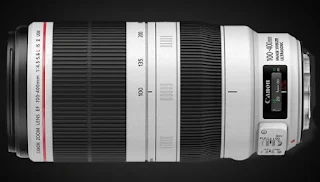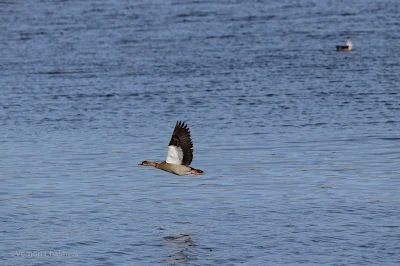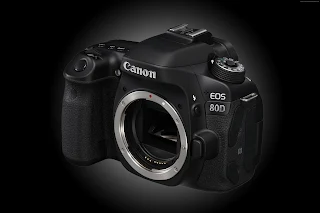Canon EOS 80D First Impressions
 |
| Blacksmith Plover in Flight with Canon EOS 80D |
Canon EOS 80D / EF 100-400mm f/4.5-5.6L IS II USM lens - First impressions and Birds in Flight Test Shoot Cape Town
Just before a private Birds in Flight photo-walk just off Woodbridge Island last weekend I was given the new Canon 80D DSLR paired with the very popular Canon EF 100-400mm f/4.5-5.6L IS II USM lens.
I only had a few hours and therefore my impressions and images are limited to the few birds in flight we encountered during the morning.
As a Birds in Flight photographer with extensive experience with the Canon EOS 70D and the Canon EOS 7D Mark II I was looking forward to see how well the new body with improved Autofocus and larger 24 MP sensor would perform in terms of general handling, autofocus, shooting speed, ISO performance, image quality and cropability during post processing.
Canon 80D Key Features and Specifications
Here are some of its key features:
- 24.2 MP APS-C CMOS Sensor: This sensor helps capture detailed and vivid images.
- 45-point All Cross-Type AF System: Provides high accuracy and fast focusing in various lighting conditions 1.
- 7 fps Continuous Shooting: Great for capturing fast-moving subjects 1.
- Full HD 60p Video: Allows for smooth action sequences and slow-motion effects 2.
- Dual Pixel CMOS AF: Ensures continuous autofocus during video recording and live view stills shooting 2.
- Vari-Angle LCD Touchscreen: Makes it easier to shoot from different angles and control the camera intuitively 1.
- Wi-Fi and NFC Connectivity: Enables easy sharing and remote control via compatible devices 1.
It’s a solid choice if you’re looking to explore new areas of photography or enhance your videography skills" (Microsoft Copilot)
Canon EOS 80D First Impressions (Mainly Birds in Flight Photography)
Impressive 45-Point All Cross-Type Autofocus (AF) System
This is quite an improvement on the EOS 70D's 19-Point AF system and in application / configuration closer to the AF system used in the Canon EOS 7D Mark II (65-Point) without the advanced AI Servo Cases 1 - 6 (and a few other advanced configuration options). It offers four different AF selection mode options - one more than the EOS 70D, but three less than the Canon EOS 7D Mark II. More information>>
Focus with 27 Autofocus Points at f/8
With the new AF system the EOS 80D can focus with 27 AF points at f/8 when using Canon's Version III EF 1.4x and 2x teleconverters paired with some of the latest Canon' telephoto lenses. The Canon EF 100-400mm f/4.5-5.6L IS II lens is one of the new generation / compatible lenses More information>>
Looks, Ergonomics and Weight
In terms of general looks, ergonomics and weight the Canon EOS 80D is very much a carbon copy of the older Canon EOS 70D on face value, with a few cosmetic tweaks and and a negligible weight advantage.
The familiar weather-sealed ruggedness with articulated LCD screen felt very much the same in hand as the EOS 70D. (Canon EOS 80D vs. EOS 70D Comparison with body images / Canon EOS 80D vs EOS 7D Mark II Comparison with body images).
Familiar Menus / User-Interface
Setting up the EOS 80D for the morning shoot was exactly the same as with the EOS 70D (and most other current EOS bodies). Anybody upgrading from the EOS 70D will appreciate the uniformity of the Canon user-interface / menu layout, switch gear and 3.0" articulated touch screen LCD.
 Pairing with the Canon EF 100-400mm f/4.5-5.6L IS II USM Lens
Pairing with the Canon EF 100-400mm f/4.5-5.6L IS II USM Lens
This is a popular and well-balanced Birds in Flight shooting combination. Not too heavy and the 100-400mm zoom range provides for enough zoom flexibility for framing close-up larger birds or for the maximum 400mm shooting for most flying birds around Woodbridge Island. I generally shoot birds in flight with the Canon EF 400mm f/5.6L USM prime lens and in my opinion the prime lens focuses slightly faster than this lens on the EOS 70D and the EOS 7D Mark II. I did not test the 400mm prime lens with the EOS 80D, but during the shoot felt that the same could be applicable with the EOS 80D - the prime lens will autofocus a bit faster than the zoom lens. More Information>>
AI Servo / Autofocus Tracking
Impressive 45-Point All Cross-Type Autofocus (AF) System
This is quite an improvement on the EOS 70D's 19-Point AF system and in application / configuration closer to the AF system used in the Canon EOS 7D Mark II (65-Point) without the advanced AI Servo Cases 1 - 6 (and a few other advanced configuration options). It offers four different AF selection mode options - one more than the EOS 70D, but three less than the Canon EOS 7D Mark II. More information>>
Focus with 27 Autofocus Points at f/8
With the new AF system the EOS 80D can focus with 27 AF points at f/8 when using Canon's Version III EF 1.4x and 2x teleconverters paired with some of the latest Canon' telephoto lenses. The Canon EF 100-400mm f/4.5-5.6L IS II lens is one of the new generation / compatible lenses More information>>
Looks, Ergonomics and Weight
In terms of general looks, ergonomics and weight the Canon EOS 80D is very much a carbon copy of the older Canon EOS 70D on face value, with a few cosmetic tweaks and and a negligible weight advantage.
The familiar weather-sealed ruggedness with articulated LCD screen felt very much the same in hand as the EOS 70D. (Canon EOS 80D vs. EOS 70D Comparison with body images / Canon EOS 80D vs EOS 7D Mark II Comparison with body images).
Familiar Menus / User-Interface
Setting up the EOS 80D for the morning shoot was exactly the same as with the EOS 70D (and most other current EOS bodies). Anybody upgrading from the EOS 70D will appreciate the uniformity of the Canon user-interface / menu layout, switch gear and 3.0" articulated touch screen LCD.
 Pairing with the Canon EF 100-400mm f/4.5-5.6L IS II USM Lens
Pairing with the Canon EF 100-400mm f/4.5-5.6L IS II USM LensThis is a popular and well-balanced Birds in Flight shooting combination. Not too heavy and the 100-400mm zoom range provides for enough zoom flexibility for framing close-up larger birds or for the maximum 400mm shooting for most flying birds around Woodbridge Island. I generally shoot birds in flight with the Canon EF 400mm f/5.6L USM prime lens and in my opinion the prime lens focuses slightly faster than this lens on the EOS 70D and the EOS 7D Mark II. I did not test the 400mm prime lens with the EOS 80D, but during the shoot felt that the same could be applicable with the EOS 80D - the prime lens will autofocus a bit faster than the zoom lens. More Information>>
AI Servo / Autofocus Tracking
During the morning the EOS 80D performed as expected - both the 70D and the 7D Mark II perform very well with the Canon EF 100-400mm f/4.5-5.6L IS II USM lens and I was satisfied that the AF locked on well within various zoom ranges. I mainly used in the Wide Zone AF setup and the intelligent viewfinder display the active AF points as per 7D Mark II. My general perception during the short shooting period was that the EOS 80D's tracking responsiveness was more towards the EOS 7D Mark II AF behaviour (in Wide Zone AF). There is also provision for various AF options for fine-tuning the AF system.
Continuous / Multi-Shot Shooting Performance
Continuous / Multi-Shot Shooting Performance
Being used to the 10 fps of the EOS 7D Mark II it took some time to get in tune with the slower 7 fps of the EOS 80D (same fps as the EOS 70D). This was no serious issue as I generally shoot in shorter bursts of three to four shots for preserving the buffer to clear and be ready for the following burst.
Buffer / SD Card Writing Speed
In multi-shot / continuous shooting the EOS 80D is definitely faster in writing the multi-shots to my SanDisk 32GB Extreme PRO 95mb/s SD card (+- 16 continuous RAW shots before slowing down) than the EOS 70D using the same card (+- 14 continuous RAW shots). It may perform slightly faster with a faster write-speed card. Nevertheless, I was quite happy with this performance. Please keep in mind that the average RAW file of the EOS 80D is +- 5 MB larger than the EOS 70D / EOS 7D Mark II. Refer to section on RAW file size.
High-speed burst compared to EOS 7D Mark II
The EOS 7D Mark II writes to / and empties its buffer faster (+- 30 continuous RAW shots) - with a Lexar Professional CompactFlash UDMA 7 32GB CF card. The difference in speed is not that much faster, but serious action photographers who wants to take their high-speed /action photography to the next level could benefit from the faster fps / buffer speeds of the EOS 7D Mark II. For an experienced action / sports photographer this may not be a big issue - as anticipation of specific movement and / or good timing (instead of just letting rip with high-speed shutter firing).
RAW File Size
The average RAW file during the shoot was +- 30 MB compared to +- 25 MB of both the EOS 70D and EOS 7D Mark II (mainly due to the EOS 80D's 24 MP sensor compared to the 20 MP sensors of the EOS 70D / 7D Mark II).
CR2 RAW File Compatibility Issues
High-speed burst compared to EOS 7D Mark II
The EOS 7D Mark II writes to / and empties its buffer faster (+- 30 continuous RAW shots) - with a Lexar Professional CompactFlash UDMA 7 32GB CF card. The difference in speed is not that much faster, but serious action photographers who wants to take their high-speed /action photography to the next level could benefit from the faster fps / buffer speeds of the EOS 7D Mark II. For an experienced action / sports photographer this may not be a big issue - as anticipation of specific movement and / or good timing (instead of just letting rip with high-speed shutter firing).
RAW File Size
The average RAW file during the shoot was +- 30 MB compared to +- 25 MB of both the EOS 70D and EOS 7D Mark II (mainly due to the EOS 80D's 24 MP sensor compared to the 20 MP sensors of the EOS 70D / 7D Mark II).
CR2 RAW File Compatibility Issues
After the morning shoot I had some issues opening the EOS 80D's CR2 RAW files in Lightroom 6 and Digital Photo Professional 4 (DPP). The CR2 files did not open properly forcing me to upgrade DPP to the latest version - Version 4.4.30.2. I then did a batch processing conversion to TIFF for importing to Lightroom 6 (for my standard post-processing workflow). Download the latest DPP 4.4.30 for Windows here>>
Image Quality
I was quite pleased with the image quality from the newer 24 MP sensor, but did not really notice a substantial improvement over the EOS 70D or the EOS 7D Mark II - I didn't do any direct comparisons, just used my experience of thousands of images captured with both my EOS 70D / EOS 7D Mark II (of similar birds in similar conditions / focal lengths using the same lens / or the Canon EF 400mm f/5.6L USM lens). Cropping images left more detail / sharpness in smaller areas (compared to the EOS 70D / EOS 7D Mark II). Canon Japan Sample Images>>.
ISO Performance
For me this is the most significant improvement over the EOS 70D (apart from the new AF System). All the files I looked at in the ISO 800 - 1250 range looked cleaner, even when cropped. This advantage should provide some post-processing benefits (at least when pushing the shadow sliders in Lightroom). On Auto-ISO I noticed a stop less ISO compared to similar conditions with images taken with the EOS 70D.
Canon EOS 80D Birds in Flight Photography Settings
Canon EOS 80D Test / Birds in Flight Photography Sample Gallery One
Random Birds in Flight - Woodbridge Island Cape Town View
Canon EOS 80D Test / Birds in Flight Photography Sample Gallery Two
Spoonbill in Flight - Woodbridge Island Cape Town View
Image Quality
I was quite pleased with the image quality from the newer 24 MP sensor, but did not really notice a substantial improvement over the EOS 70D or the EOS 7D Mark II - I didn't do any direct comparisons, just used my experience of thousands of images captured with both my EOS 70D / EOS 7D Mark II (of similar birds in similar conditions / focal lengths using the same lens / or the Canon EF 400mm f/5.6L USM lens). Cropping images left more detail / sharpness in smaller areas (compared to the EOS 70D / EOS 7D Mark II). Canon Japan Sample Images>>.
ISO Performance
For me this is the most significant improvement over the EOS 70D (apart from the new AF System). All the files I looked at in the ISO 800 - 1250 range looked cleaner, even when cropped. This advantage should provide some post-processing benefits (at least when pushing the shadow sliders in Lightroom). On Auto-ISO I noticed a stop less ISO compared to similar conditions with images taken with the EOS 70D.
Canon EOS 80D Birds in Flight Photography Settings
- Manual Mode
- Metering: Evaluative
- Aperture: F/6.3
- ISO: Auto-ISO (100 - 1250)
- Shutter speed: 1/1000s - 1/4000s
- AI Servo / 7 fps multi-shot mode
- AF: Large Zone
- Lens IS Off
Canon EOS 80D Sample Images : Cropped / Uncropped
 |
| Canon EOS 80D Significant Crop @ 300mm ISO 500 (some post-processing) |
 |
| Canon EOS 80D Original Image @ 300mm ISO 500 (no post-processing) |
Canon EOS 80D Test / Birds in Flight Photography Sample Gallery One
Random Birds in Flight - Woodbridge Island Cape Town View
Canon EOS 80D Test / Birds in Flight Photography Sample Gallery Two
Spoonbill in Flight - Woodbridge Island Cape Town View
Conclusion: My Canon EOS 80D final thoughts...
The Canon EOS 80D is in many ways a subtle / evolutionary upgrade from the Canon EOS 70D with the 45-Point AF system and ISO low noise performance the two biggest standout features for me. Overall the body performed closer to the EOS 70D than the EOS 7D Mark II for Birds in Flight / Action photography. As an all-round enthusiast DSLR camera the EOS 80D will not disappoint photographers upgrading from the EOS Rebel / xxxD bodies or for photographers upgrading from the EOS 60D / 70D not requiring the advanced AF system of the Canon APS-C flagship, the Canon EOS 7D Mark II. The EOS 80D is compatible with the full range of Canon's EF-S and EF consumer and professional lenses that should make it a very good enthusiast DSLR body choice for a wide range of photography genres.
Canon EOS 80D Main Features
More Canon EOS 80D Information / Manual Downloads Go>>
Canon EOS R First Impressions and Sample Images
Canon EOS R First Impressions and Sample Images
Canon EOS 80D Article / Images © Vernon Chalmers
- New 45-point all cross-type AF system
- Intelligent Viewfinder with approximately 100% viewfinder coverage
- Newly Developed 24.2 Megapixel (APS-C) CMOS sensor
- DIGIC 6 image processor for enhanced image quality
- Improved Dual Pixel CMOS AF for smooth, fast and accurate autofocus with video and stills
- Built-in Wi-Fi® and NFC(TM) capability for easy transfer of images and movies to compatible mobile devices
- 1080/60p Full HD video to capture brilliant results in MP4 format for easy movie sharing
- Vari-angle Touch Screen 3.0-inch Clear View LCD II monitor
More Canon EOS 80D Information / Manual Downloads Go>>
Other Canon EOS Bodies 1st Impressions and Links
Canon EOS R First Impressions and Sample Images
Canon EOS 80D Article / Images © Vernon Chalmers
